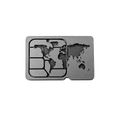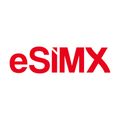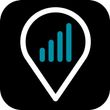Travelesim.ch is a Swiss-based travel eSIM provider offering affordable mobile data plan. With dedicated apps for both Android and Apple devices, it allows users to easily manage their eSIMs, check usage, top up their accounts, and supports multi-language and currency. Designed for hassle-free international travel, Travelesim.ch provides seamless connectivity for both tourists and business travelers, all in one user-friendly app.

Travelesim.ch is a Swiss-based travel eSIM provider offering affordable mobile data plan. With dedicated apps for both Android and Apple devices, it allows users to easily manage their eSIMs, check usage, top up their accounts, and supports multi-language and currency. Designed for hassle-free international travel, Travelesim.ch provides seamless connectivity for both tourists and business travelers, all in one user-friendly app.
TraveleSIM.CH eSIM Data Plans for Indonesia
Frequently Asked Questions
Does TraveleSIM.CH offer unlimited data eSIM for Indonesia?
TraveleSIM.CH does not provide an unlimited data eSIM for Indonesia. The available plans for the Indonesian market are fixed‑data offerings, such as a 50GB plan valid for 30 days or a 50GB plan valid for 180 days. Because the data allowance is capped, travelers who need very high data consumption may find that a fixed‑data plan is more cost‑effective than an unlimited option.
Does TraveleSIM.CH offer Indonesia eSIM with phone number and SMS?
TraveleSIM.CH does not offer an Indonesia eSIM that comes with a local phone number or SMS capability. Only data‑only eSIM plans are available for travelers visiting Indonesia.
If you need voice or messaging while abroad, you can use popular VoIP apps such as WhatsApp, Telegram or iMessage over the data connection provided by the eSIM. These services allow you to make calls and send messages without a local phone number.
How many data plans does TraveleSIM.CH offer for Indonesia?
TraveleSIM.CH provides 13 single‑country data plans and 41 multi‑country data plans for use in Indonesia. The available plans span a price range from $2.50 to $119.16 and a data cap range from 1 GB to 50 GB. Some plans offer a fixed amount of data for the entire validity period, while others apply a daily data cap that allows the user to consume data each day within the plan’s allocation. This variety lets travelers select a plan that best matches their budget and usage needs.
Summarized by Gen AI. Last updated:




